We aren’t going to lie to you, making your dirt bike street legal in California isn’t the easiest thing to do.
It is far easier to purchase a bike that’s already street legal and transfer the title to your name.
With that said, many people still love the thrill of attempting to do it themselves, so we’ve put together this guide on how to make a dirt bike street legal in California. We will also cover why it’s difficult, what parts you need, and how to get a license plate for your dirt bike in California.
California’s official rules may change at any time, so always check your local laws and requirements before attempting to make your dirt bike street legal.
Can You Make a Dirt Bike Street Legal in California?
Technically, no.
Back in 2004, legislators cracked down on dirt bikes getting license plates and made it nearly impossible for anyone to become street legal. You can see the evidence of this in old forum posts where people complain about how hard it became overnight.
With that said, it’s not impossible to ride a dirt bike on the streets of Cali.
The easiest way to get street legal is to purchase something that’s already been legalized. We’ve covered that already.
If that doesn’t float your boat, then you will need to add a plethora of parts to your dirt bike. These parts get your machine ready for on-road travel and make it legal to register. They also keep the police from pulling you over, which most people agree is a good thing.
Sure officer, I’m from Washington
Running Out of State Plates in California
After you convert your dirt bike to a street legal beast, you will then need the help of a title service company such as Dirt Legal to get a title, tag, and registration. You don’t want to attempt to do this part on your own.
Getting a California license plate for a dirt bike is extremely difficult thanks to that legislation we discussed earlier. Cases of dirt bikes successfully getting California license plates often involve:
an inexperienced DMV worker
a clerical error on the back end
blind luck of falling through the cracks
In any of these cases, you’re riding a thin line. If the state knew what happened your registration could be revoked at any time.
You will most likely need to have an out-of-state license plate and title, something certain jurisdictions in California frown upon. In fact, The LA Times once said the following about plates from other states:
The state vehicle code is clear. California residents who buy a vehicle with out-of-state license plates for use in California are required to apply for registration and pay license and registration fees within 20 days of purchasing the vehicle. Failure to do so can result in penalties.
This restriction was designed to keep people from dodging California’s notoriously complex and expensive vehicle registration rules.
In practice, we have heard from many firsthand sources that you can live in California for years without getting into trouble for having an out-of-state license plate. But like noise ordinances and curfew laws, they still exist even if people tend to ignore them.
Do You Need a License to Drive a Dirt Bike in California?
Anytime you ride your dirt bike on the street, you will be required to follow the same driver’s license laws as if you had a car. To ride a dirt bike on a trail, there’s no legal age limit required. Kids as young as three have no trouble zipping around on their dirt bikes with training wheels. But hit the road and the law kicks in.
Why Is It so Hard to Register a Dirt Bike in California?
One word: emissions.
For decades, California has cracked down heavily on vehicle emissions. This has eliminated most dirt bikes from the equation. Either your dirt bike needs to have an EPA sticker from the manufacturer stating it is street legal or it must have a CARB permit which is extremely difficult and rarely cost-effective to obtain for a vehicle that wasn’t originally California legal.
In some states, you can find a lenient inspector that can help get your bike street legal. Or maybe you have your favorite mechanic who passes your stuff without even looking at it. Not in California! They do everything through a VIN verification. There is no mechanical inspection for a dirt bike so you never get that chance.
What Equipment Is Needed to Be Street Legal?
Now that we’ve covered what is and isn’t possible about titling a dirt bike in California, let’s run down the components you need to add if you plan to make your dirt bike street legal in the state of California.
Even if you have an out-of-state license plate, you are going to need these basic items at the bare minimum to avoid catching the attention of Johnny Law.
Headlights
Tail lights
Blinkers
Mirrors
Reflectors
Horn
Optional but highly suggested items include:
DOT approved tires
DOT approved exhaust
Speedometer
Odometer
Most of these parts are standard on today’s most popular models. Especially if you have a factory-built street legal dirt bike you probably have most of those already, but if not you can probably install them in a weekend.
Always check your local laws and regulations before venturing out onto the road.
Gorgeous, but unlikely to be legal. Source
DOT Approved Exhaust
On January 1, 2019, California enacted new legislature which states the following about motor vehicle exhaust systems:
Exhaust systems installed on motor vehicles with a manufacturer’s gross vehicle weight rating of less than 6,000 pounds, other than motorcycles, may not exceed a sound level of 95-decibels […] violations will result in an immediate fine. [source]
As you can see, this law does not directly apply to motorcycles which often exceed 95dB on a regular basis. As it turns out, bikes have it even harder. According to RiderzLaw.com and the information in this South Bay Riders forum post:
California
Motorcycle Max sound levels:
1)Pre-1970: 92dba;
2) After 1969, and before 1973: 88dba;
3) After 1972, and before 1975: 86dba;
4) After 1974, and before 1986: 83dba;
5) After 1985…80dba [source]
In short, if you ride around with completely open exhaust you’re asking for a citation. Anything short of that and you will probably be okay in practice, but the law does outline decibel limits you should be aware of.
DOT Approved Tires
Your off-road knobbies simply won’t cut it. Make sure you replace them with a set of tires that are DOT Approved. Don’t get discouraged; plenty are great for off-roading that state DOT on the sidewall. You can still rip trails while making California lawmakers smile in bed at night.
Speedometer
While these aren’t required by law, it’s a good idea to add one anyway. Go all out and grab yourself a speedometer that features a gear indicator, fuel gauge and tach as well. Following the guy in front of you is all well and good, but sometimes the person in back is the one who gets pulled over - and that excuse won’t hold up.
If you are going to do it, you might as well do it right.
Odometer
Here’s another piece of equipment you don’t necessarily need, but might want to add. Thankfully, you don’t need to spend a lot of money to get a working odometer. You can even find integrated speedometer/odometer units to make everything a little easier.
Horn
The horn is one of the easiest dirt bike modifications you can make. You just need to make sure you have enough power for the horn. You can install a small auxiliary battery or upgrade the stator. You are going to need to do this anyway for your lights.
In California, the law states that the horn must be capable of emitting sound with a minimum distance of 200 feet. It also shouldn’t create more than 110 dbA or produce a harsh tone. So, if you thought you were going to install a squeaky horn off a bicycle, you are wrong.
Turn signals
You will need turn signals on the front and rear of your dirt bike. In California, the law states that all vehicles must have two single-faced or double-faced turn signal lamps near the front (facing two ways) and two single-faced lamps in the rear.
On street legal dirt bikes, these signal lamps must be at least nine inches apart from one another.
Lights
Not only do you need to see your way around at night, but others need to see you. The trouble is, most dirt bikes don’t have the battery power required to light up the way. You might need to upgrade your charging system or add an extra battery to your rig.
In California, a motorcycle headlight must be mounted between 22 and 54 inches above the roadway. It must consist of both high and low beams, an on/off switch to turn on and off the high beam, and a high beam indicator lamp on the dashboard.
As far as your tail light goes, you will only need a single tail light on the back of your bike. It must be red and needs to be visible from all distances within 1,000 feet to the rear.
With your brake light, it must also be red and mounted at least 15 inches off the roadway. You are only required to have one brake light and it must be visible from a distance of 300 feet to the rear. This applies both at night and during normal sunlight hours.
Choose an LED or HID for a brighter light. They are also more durable and last longer. Just make sure your lights are DOT approved so you don’t get pulled over. DOT approval meets specifications for beam pattern, light spread, and materials quality.
Mirrors
Motorcycles in California must have one rear view mirror.
California specifies that the mirror should be convex with a minimum 6450 square millimeters of reflective surface. That means the smallest mirror you could purchase for a motorcycle would be a circle with a diameter of 3.57 inches. For a flat mirror, it would need to be 3.99 inches in diameter.
Be careful of all the companies selling 3-inch diameter mirrors because these won’t be legal in California.
License plate light and holder
The California Vehicle Code states:
Either the taillamp or a separate lamp shall be so constructed and placed as to illuminate with a white light the rear license plate during darkness and render it clearly legible from a distance of 50 feet to the rear. When the rear license plate is illuminated by a lamp other than a required taillamp, the two lamps shall be turned on or off only by the same control switch at all times.
The California motorcycle license plate is 7 inches x 4 inches with ¼-inch bolt holes on all four corners. California plates must be mounted horizontally between 12 and 60 inches from the ground and must be illuminated by a light at all times.
You Also Need a License Plate
That’s where Dirt Legal comes in. Making things street legal is what we do. You’ll just need to call us at 800-994-7513 or visit our Dirt Bike Conversions page by clicking the link.
From there, we’ll send you some documents to fill out. Then we’ll work with the DMV to ensure that all laws are followed in making your dirt bike street legal to drive on public roads. You’ll get a license plate, title, and registration!
No hoops and no hidden clauses – just you, your street legal dirt bike, and the open road.
We even sell all the horns, blinkers, and parts you need to convert your own vehicle. We can handle all the DMV paperwork to get you a license plate and registration without you even having to leave your house.
Ready to make your dirt bike street legal in California?
Once you’ve completed getting your bike ready for the road, it’s time to contact us. We can guide you through the steps to get your registration and start enjoying lane splitting during your daily commute.


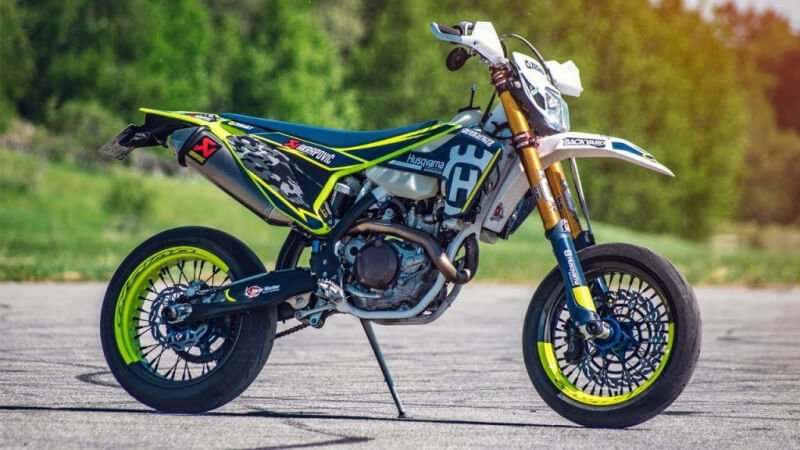
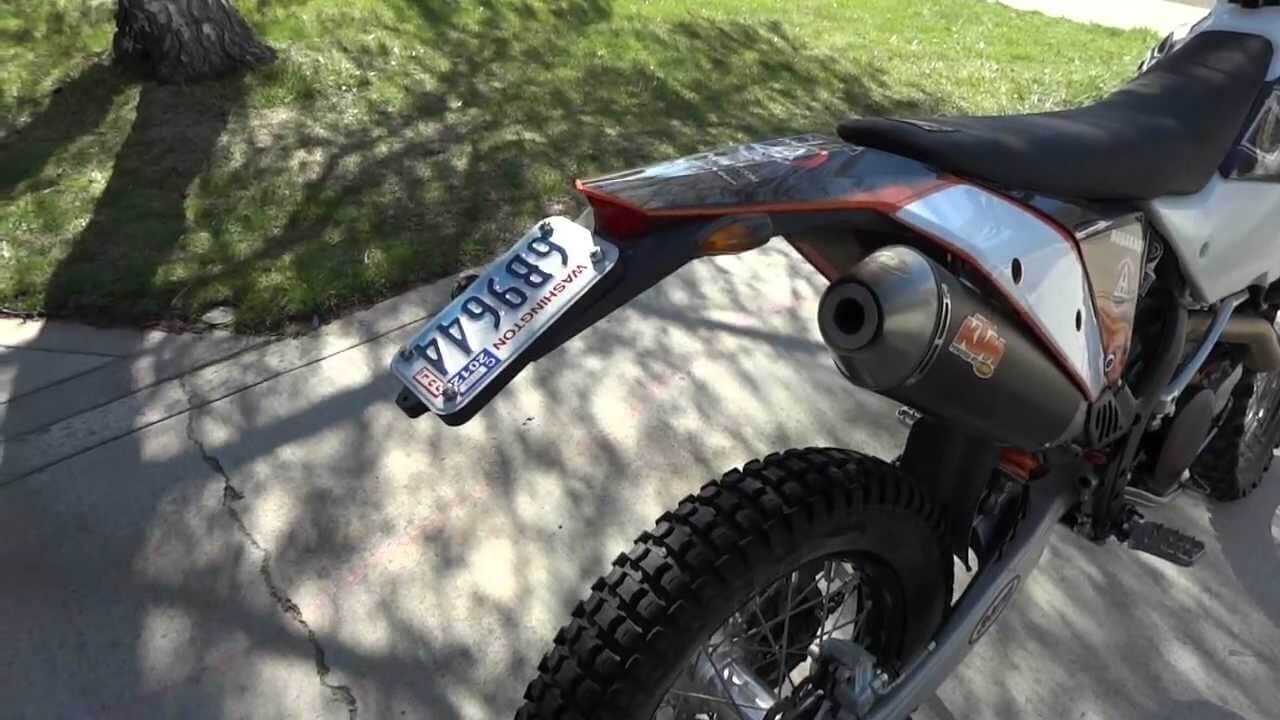

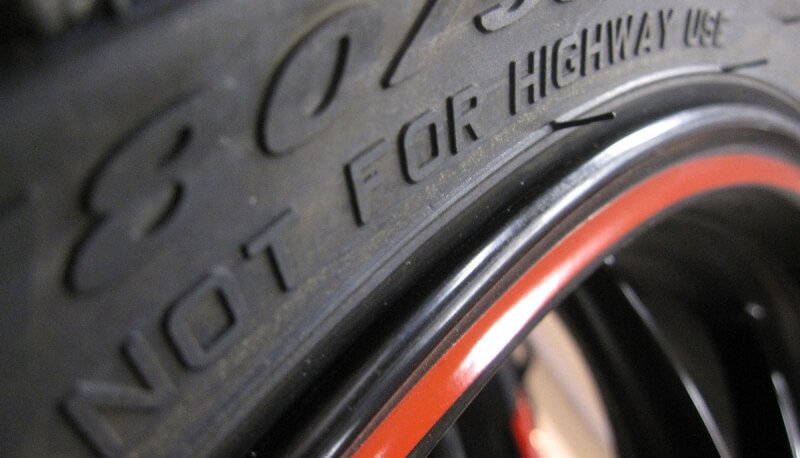

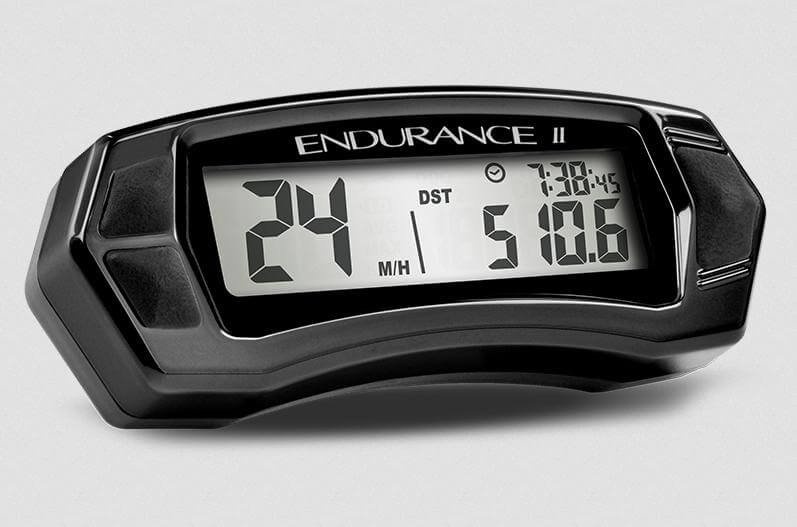

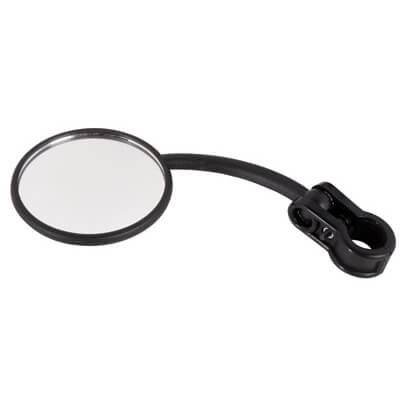











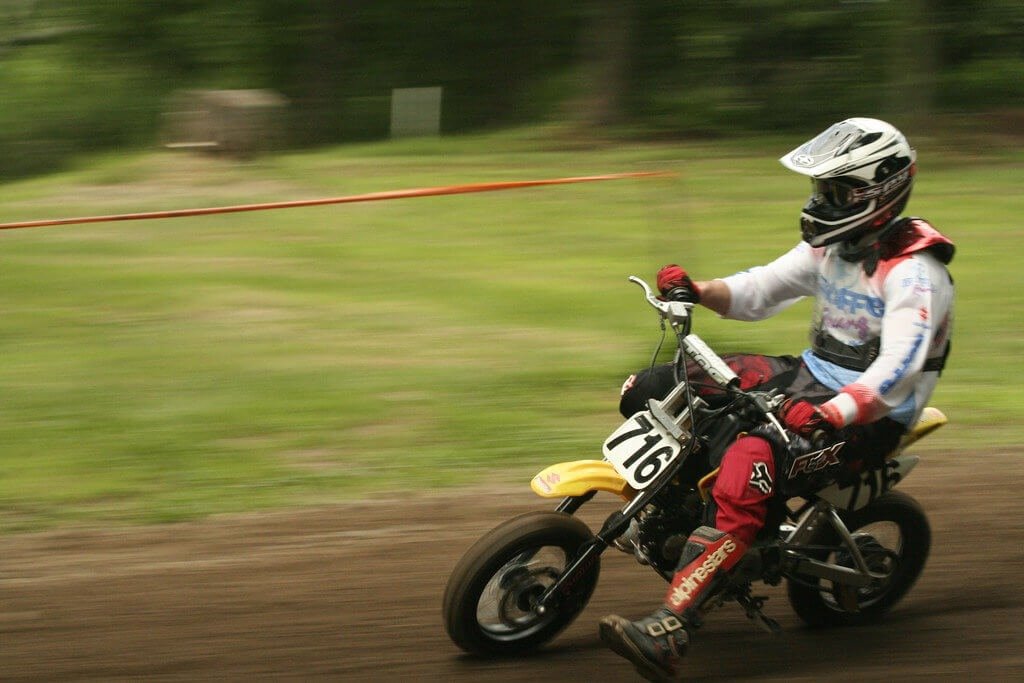
Ready to take your dirt bike on the street? Check out the best bikes to turn into supermotos.